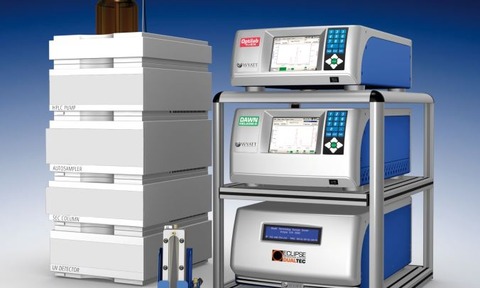
Macromolecular characterisation instrumentation and software firm Wyatt Technology has published a whitepaper on characterising molecular structure in synthetic and natural polymers by multi-angle light scattering.
The paper details the basic principles of the detection and characterization of branching by means of a multi-angle light scattering (MALS) detector and the various methods used.
The paper outlines research into the abnormal elution behaviour of branched macromolecules in size exclusion chromatography (SEC) and explains the comparative data acquired by SEC-MALS and asymmetric flow field flow fractionation (A4F).
The comparison of SEC-MALS and A4F-MALS proves superior, artefact-free A4F separation of large and highly branched macromolecules compared to their abnormal separation by SEC.
Highlighting the significant impact branching has on the properties of the structural parameter of synthetic and natural polymers; the whitepaper acknowledges the importance of quantitative branching topology information, for the development of novel polymer-based materials and for understanding polymerisation processes.
Using Wyatt Technology instrumentation, such as a MALS photometer DAWN HELEOS, an online viscometer ViscoStar, a refractive index detector Optilab T-rEX and an A4F system Eclipse AF4; lead researcher Stepan Podzimek was able to successfully analyse branching in poly(lactic acid).
“In order to identify and characterise branching, one needs information about the molar mass and the molecular size. That is exactly the power of using a multi-angle light scattering detector: it provides both pieces of information simultaneously and independently.
“The MALS detector is usually connected to an analytical separation technique - most commonly SEC - to determine branching parameters as a function of molar mass. Typically the parameters of interest are the branching ratio and the number of branch units per molecule. Wyatt MALS photometers allow direct determination of branching ratio g and number of branch units per molecule,” Podzimek said.
Please click here to download the full whitepaper.



